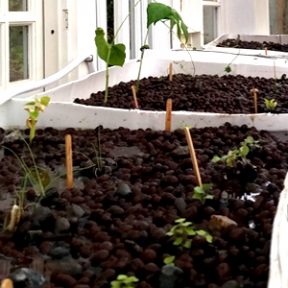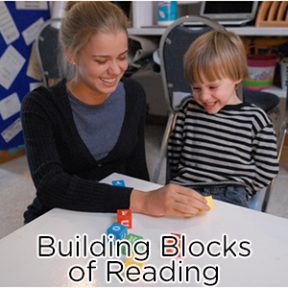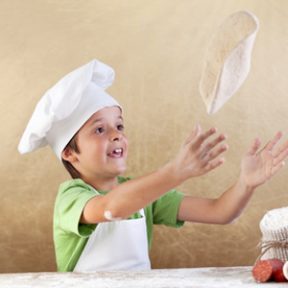 I’ve been so confused about sunscreen lately that I’ve just avoided dealing with it all together. I know that you can DIE from skin cancer and DIE from toxic chemicals used in sunscreens.
I’ve been so confused about sunscreen lately that I’ve just avoided dealing with it all together. I know that you can DIE from skin cancer and DIE from toxic chemicals used in sunscreens.
Recently my doctor suggested that I get at least 10 minutes of sunshine WITHOUT SUNSCREEN to ensure that I get enough Vitamin D each day or take a supplement during overcast days and winter months.
Is your head spinning? Mine is! I had a hard time wrapping my head around all of these concerns so I did a little research and found EWG’s 2015 Guide to Sunscreens (Environmental Working Group; a nonprofit). I like the way they list the manufacturer and product names to avoid as well as the ones to buy. Easy Peasy!
So there are better ways to apply sunscreen than others (like don’t use the spray ons!). There are chemicals that are carcinogenic. And the new alert is for sunscreens that have Vitamin A. I know this may sound counterintuitive because Vitamin A is supposed to be good for skin with its antioxidant properties (it’s in so many cosmetics and lotions!) but using it while in the sun can cause damage to DNA and speed growth of cancerous tumors! Yikes! Who knew?
 I’ve been so confused about sunscreen lately that I’ve just avoided dealing with it all together. I know that you can DIE from skin cancer and DIE from toxic chemicals used in sunscreens.
I’ve been so confused about sunscreen lately that I’ve just avoided dealing with it all together. I know that you can DIE from skin cancer and DIE from toxic chemicals used in sunscreens.
Recently my doctor suggested that I get at least 10 minutes of sunshine WITHOUT SUNSCREEN to ensure that I get enough Vitamin D each day or take a supplement during overcast days and winter months.
Is your head spinning? Mine is! I had a hard time wrapping my head around all of these concerns so I did a little research and found EWG’s 2015 Guide to Sunscreens (Environmental Working Group; a nonprofit). I like the way they list the manufacturer and product names to avoid as well as the ones to buy. Easy Peasy!
So there are better ways to apply sunscreen than others (like don’t use the spray ons!). There are chemicals that are carcinogenic. And the new alert is for sunscreens that have Vitamin A. I know this may sound counterintuitive because Vitamin A is supposed to be good for skin with its antioxidant properties (it’s in so many cosmetics and lotions!) but using it while in the sun can cause damage to DNA and speed growth of cancerous tumors! Yikes! Who knew?
 Imagine a fish tank filled with fish and media beds filled with garden veggies connected together in a full-cycle system. This is called AQUAPONICS. The fish produce waste and microbes and worms convert the waste (ammonia) to fertilizer (nitrites to nitrates) for the plants. Then, the plants filter the water (cleaning it) that is returned to the fish tank. It’s a closed-loop system that uses no chemicals. What a concept! This takes “natural” and “organics” to a new level! There are absolutely NO CHEMICALS used. No pesticides. No antibiotics. No soil; just rocks. Besides, chemicals and artificial additives would kill the fish and the plants!
Imagine a fish tank filled with fish and media beds filled with garden veggies connected together in a full-cycle system. This is called AQUAPONICS. The fish produce waste and microbes and worms convert the waste (ammonia) to fertilizer (nitrites to nitrates) for the plants. Then, the plants filter the water (cleaning it) that is returned to the fish tank. It’s a closed-loop system that uses no chemicals. What a concept! This takes “natural” and “organics” to a new level! There are absolutely NO CHEMICALS used. No pesticides. No antibiotics. No soil; just rocks. Besides, chemicals and artificial additives would kill the fish and the plants!
I saw my first aquaponics system while I was on vacation in Disneyworld. They had a giant tanks filled with tilapia and TOMATO TREES! Yes, tomato trees that grow year round. I was especially intrigued by the prospect of raising fish because I had been reading about how farm-raised fish live in filthy, unhealthy conditions and what consuming THEIR unhealthy bodies does to our bodies. I have always been a big fan of eating organic, non-GMO veggies. Putting these two systems together just made perfect sense to me.
I took an aquaponics class and learned how to build the system. Then I hired an aquaponics teacher to build the tanks for me. We got 5 food-grade 55-gallon plastic containers: Two for the fish, one for the filter system, and two (that we cut lengthwise) to create 4 half media beds for the plants. We connected each tank with one-inch PVC pipes and added a water filter and pump. We tested the system for about 2 months until we got the alkalinity balanced. Then we introduced feeder fish to get the poop water started.
Each month, we added more fish to increase the fish waste produced. Finally, about 5 months later, we bought catfish and Blue Gill to raise. We had several mishaps with fish getting sucked into the filter system – ProTip: install a screen to prevent the fish from flowing from tank to tank! We planted cucumbers, kale, beets, celery, basil, onions, and broccoli. Although it took several months for the plants to get acclimated in a hydroponic system (no soil), all of our plants are thriving now. Creating this mini eco system has been quite an adventure. Watch out for celery; the celery root system grows so fast that they can clog up your tanks!
[carousel][carousel-item active=”true”] [/carousel-item][carousel-item]
[/carousel-item][carousel-item] [/carousel-item][carousel-item]
[/carousel-item][carousel-item] [/carousel-item][/carousel]
[/carousel-item][/carousel]

Have you noticed that there seems to be an epidemic of “poor test takers” who routinely get A’s on their homework but fail miserably on quizzes and tests? Yup! We have a glut of them in every class. Parents are dumbfounded by this phenomenon and shrug their shoulders as they accept this excuse for what really is simply a lack of knowing the material. I wrote an article The Myth Behind “Poor Test Taking” that describes in great detail why students fail on tests; and here is the “Spark Notes” version.
Teachers are vulnerable to administrators demanding high standardized test scores and parents who complain about too much homework and low grades. With so much at stake, teachers spend too much time preparing students for exams by drilling them in class, giving repetitive homework, and providing “study guides” so students know exactly what to study — or memorize.
On the surface, this looks great because the kids only memorize what they need to learn for the tests and the teachers can control what is taught and what is tested, creating a formula that appeases the administration and pleases the parents. But, this doesn’t give the students what they really need to fully understand the concepts — the breadth AND the depth — that they need to demonstrate that they undoubtedly know the material.
In other words, they don’t have a comprehensive understanding of the material to apply their knowledge to select the correct answer. So, when they are faced with showing their mastery of the subject, they bomb out. Without their cheat sheets and study guides, they can’t answer any question that is not formatted exactly the way it was presented in class. THEY JUST DON’T KNOW THE MATERIAL!
Unless your child has learning differences (disabilities), getting A’s on tests and quizzes is simply a matter of rethinking HOW to STUDY. Most students study for tests the night before — or even the morning of — the test. They claim that they’ll forget everything if they prepare any earlier than that. If I got a dollar every time I heard that, I’d be a zillionaire! So when should a student study? Four days before the test. Block off 30 minutes to an hour each day to re-read the piece, make flashcards, take a practice quiz, and write notes. Because their lives are busy, they should write down their plan in a planner so they can refer to it — throughout the day. By studying for four-consecutive days, they’ll interface with the material and ACTUALLY LEARN IT! Their brains need time to absorb the concept and see it in many different contexts. This gives them plenty of time to meet with their teachers or use a tutor to get clarification over confusing concepts. By using this simple plan, you’ll see an uptick in your kids’ test scores.
After each test or quiz, students should save their notes and tests. Don’t let them throw them out because they’re done with the short-term test. Review them once per week, say a Saturday when they’re more relaxed, to keep these concepts fresh and to build an even stronger collective knowledge about the subject area. When finals week arrives, your child will not be cramming like the others because he’ll already know the concepts. That weekly review now replaces the insanely crazy “dead week” at the end of the semester when students are cramming to prepare for final exams in all of their classes. Who needs the stress? With a solid foundation and comprehensive understanding of the material, your child will ace their final exams!
 More prom photos!
More prom photos!
Want your hair to cause heads to turn?
I’ve selected a few braid styles that will have all eyes on you!
Check out some of my favorite updo braids that are perfect for PROM!
Did you know that these and a bunch more are available in the book Simply Gorgeous Braids? It’s true!


 Let’s face it, tackling reading skills was NOT a pleasant experience for most people. As a matter of fact, I find that when I mention educational games or teaching reading most parents treat it like a punishment or something you have to do (like taking your medicine by holding your breath). But when Nicole was 18 months old, I started playing vocabulary building and reading readiness games with her, and found that she really liked them. She actually preferred them over other activities.
Let’s face it, tackling reading skills was NOT a pleasant experience for most people. As a matter of fact, I find that when I mention educational games or teaching reading most parents treat it like a punishment or something you have to do (like taking your medicine by holding your breath). But when Nicole was 18 months old, I started playing vocabulary building and reading readiness games with her, and found that she really liked them. She actually preferred them over other activities.
I guess it all depends on how you introduce learning to your child. If learning and “school” was an unpleasant experience for you, you’ll need to leave your past behind and look at teaching your child as an adventure in a new world — even for you! Your excitement — genuine excitement — will be your child’s first exposure to learning. So make it a great one!
You don’t need to spend a fortune on educational games. For toddlers to pre-kindergartners, you probably have most of the materials you need. As you know, the English language is not phonetic — not even close. Try sounding out “thought” or “phone”! I found the best way to introduce reading is to teach the SOUNDS that individual letters and groups of letters make. So many people only teach the letter names — which doesn’t really help with the reading process! Or they only focus on short and long vowels and the main consonants. But if you give children ALL OF THE TOOLS they need to learn to read, they will thrive.
So what tools do they need? First, start with the letter names. I know I just mentioned that the names aren’t important but they make learning their sounds much easier. So just teach the names of the letters so they recognize their shapes. Then, teach ALL of the sounds that each letter makes. In other words, don’t teach them that the letter “C” only makes a “cuh” sound; teach them that the letter “C” makes TWO SOUNDS: “cuh” and “sssss.” That way, you really are giving them tools to decode words!
 Putting several letters together to create new sounds is really the key to teaching reading. When you put 2 letters together it’s usually called a blend because you are doing just that — blending the sounds. If English were that easy, reading would be a piece of cake! But when you put 4 letters together, like O-U-G-H, you’ll lose every kid. These are called PHONOGRAMS. Did you know that there are 6 ways to pronounce “ough”? There’s ah (wrOUGHt), owe (dOUGH), ooh (thrOUGH), ow (bOUGH), uff (rOUGH), off (cOUGH). Who created this language? Are you confused? Imagine what it’s like for a young child! Check out LogicOfEnglish.com to learn all of the sounds our alphabet makes. They have great video and audio support so you can relearn these decoding skills.
Putting several letters together to create new sounds is really the key to teaching reading. When you put 2 letters together it’s usually called a blend because you are doing just that — blending the sounds. If English were that easy, reading would be a piece of cake! But when you put 4 letters together, like O-U-G-H, you’ll lose every kid. These are called PHONOGRAMS. Did you know that there are 6 ways to pronounce “ough”? There’s ah (wrOUGHt), owe (dOUGH), ooh (thrOUGH), ow (bOUGH), uff (rOUGH), off (cOUGH). Who created this language? Are you confused? Imagine what it’s like for a young child! Check out LogicOfEnglish.com to learn all of the sounds our alphabet makes. They have great video and audio support so you can relearn these decoding skills.
Although this may seem difficult, it really isn’t. We’re turning reading into a science by giving kids the tools they need to break down the reading process. Simple as that! Using plastic letters, teach your kids the letter sounds — all of them — and then they’ll have fun making up nonsense words using their new-found skills. Put the letters together to form phonograms. We created posters with each phonogram and my girls would add words that contained each phonogram. You might be surprised by your child’s fascination with the science of reading when they start pointing out letters and phonograms while you’re driving or shopping! This is an excellent way to learn the many ways to read and spell.
 My husband claims that he must be a KING because he has a QUEEN and 2 PRINCESSES! Seriously. He insisted on having all male dogs in an attempt to balance the raging hormones here in our household! I loved having all of the female energy here at home — we designed vanities for each of our rooms, built a dance studio with floor to ceiling mirrors and a dance floor, and organized our hair accessories and hats all over our walls.
My husband claims that he must be a KING because he has a QUEEN and 2 PRINCESSES! Seriously. He insisted on having all male dogs in an attempt to balance the raging hormones here in our household! I loved having all of the female energy here at home — we designed vanities for each of our rooms, built a dance studio with floor to ceiling mirrors and a dance floor, and organized our hair accessories and hats all over our walls.
But my husband’s biggest beef was with OUR SHOES!
We had hundreds of shoes. Storing the shoes became a problem when our shoe racks consumed our closets and he had to move his clothes to the laundry room! Hmm. In hindsight, that probably wasn’t fair. Even so, we bought every kind of shoe rack — the kinds that hang on doors, stackables in the closet, and we even built shoe cubbies at every entrance to our house. But still there were piles of shoes in closets. When your shoes are in piles you can’t really tell what you have, so we had to keep buying more…which can be a good thing or a bad thing depending on your perpective (and/or bank balance).
My youngest daughter Jaclyn recently moved into a condo in Mountain View. Shortly after moving in, she reported that she didn’t have enough room in her (15 foot walk-in) closet for all of her shoes, so I decided to build her a shoe storage unit that could hold them all and use the least amount of floor space. Quite a tall order! I knew it needed to be a vertical design and came up with the floor-to-ceiling SHOE CAROUSEL.
I went down to San Lorenzo Lumber and showed my drawings to Mario, the foreman. He cut 24-inch circles out of half-inch plywood, which I lugged home and then drilled 1-inch holes in the center of each. Then I bought 1-inch threaded pipes with connector pieces long enough to reach from the floor to the ceiling. Wanting to make the shoe carousel spin so we could see all of the shoes at a glance, I installed a Lazy Susan (I get teased about this every time!) between the first 2 boards. Then I placed a large washer and big nut between each board. In order to maximize our space, we measured the height of various shoes and created custom height between boards. For boots, we left a 14-inches space while tennis shoes only needed 5 inches. Jaclyn has dozens of 6-7 inch heels so she has 2 8-inch high shelves.
[carousel][carousel-item active=”true”] [/carousel-item][carousel-item]
[/carousel-item][carousel-item] [/carousel-item][carousel-item]
[/carousel-item][carousel-item] [/carousel-item][/carousel]
[/carousel-item][/carousel]
The completed Shoe Carousel has 13 shelves that are 24-inches wide. By putting 6 PAIRS of shoes on each shelf, it could hold at least 78 pairs of shoes (that’s 156 shoes!). We topped off the shoe carousel with a closet-pole holder to keep the pole in place when you turn the carousel. With a quick spin, we can see every shoe we own and we’ve probably saved lots of money to boot (pun intended). This was an easy and very practical project, and now Jaclyn has tons of floor space in her closet. Problem solved!

 With summer vacation just around the corner, the kids are so ready for a break from school. If you’re a working mom, you’ll need to plan out their entire summer and there’s a lot to consider.
With summer vacation just around the corner, the kids are so ready for a break from school. If you’re a working mom, you’ll need to plan out their entire summer and there’s a lot to consider.
There are two types of extreme mothers out there: the TIGER MOM, and the HELICOPTER MOM.
The Tiger Mom is based on Amy Chua’s book The Battle Hymn of the Tiger Mother. After that book came out, there was a huge outcry from American moms who were horrified with Chua’s parenting style. If you missed it, she demanded that her daughters play piano, and she wouldn’t let them play with friends or go to parties because frivolous activities like that took away from studies and piano practice. The Asian stereotype!
The Helicopter Mom stops games before they end so that nobody’s feelings get hurt, and she hovers over her children — hence “helicopter”, often doing their homework and chores for them. The overprotective stereotype!
Children raised by moms of either stereotype are doomed for some type of failure:
The Tiger Mom’s kids might be virtuosos and mini Einsteins but they probably suffer from anxiety — never being quite good enough and not having the autonomy to make their own decisions.
The Helicopter Mom’s kids, on the other hand, might be stress free but they probably lack a full personal identity because they haven’t had the opportunity to challenge themselves and work hard towards a personal goal.
Both types of moms interfere with their children developing personal character, having a sense of real accomplishment for reaching their goals, and understanding how to deal with setbacks and obstacles in the real world.
This summer, don’t be a Tiger Mom. Don’t make your child practice endless drills for the sake of “getting into college.” Don’t hold them back from being children because you want them to develop skills that you have decided are good for them. And don’t control every moment of their lives so they feel like they’re dead inside. You might be squeezing the youth right out of them!
This summer, don’t be a Helicopter Mom. Let your child get some bumps and bruises. Stop catching them as they begin to fall because they’ll never be able to make good choices if they don’t have experiences to learn from. Living in a bubble will get boring and they might turn into terrors when they’re older. That’s bad for everyone! You might find that your kid loses motivation for doing anything because there’s no real point in doing them. Let them experience the highs of winning and the lows of losing. That’s how they become stronger, motivated, and wiser.
This summer, find a balance for your kids. Give them an enriching summer experience filled with teamwork, creativity, and challenges. Let them be part of the planning, implementation, and completion. Don’t create unrealistic plans and don’t micromanage their every move.
I like to call this “third way” the American Tiger Mom – that’s what I label myself. By working with my girls to lay out exciting summer plans that included musical theater productions in our garage, culinary classes, and some academics (you don’t want their brains to turn ENTIRELY to mush over the summer), their summers added the much needed break from school but gave them opportunities to lead and explore activities that they didn’t have time for during the school year.
So, when planning your child’s summer, find your balance and you might find that they become a little wiser and more ready to start school in the fall.
 Pardon the pun, but this is a hair related post! Anyway, I love this time of year! All of the kids are talking about PROM and the girls are out shopping for dresses. It’s a whole big thing, and having awesome hair is a big part of the prom experience. My girls were involved in dance while they were growing up, AND they had long hair, so we spent quite a bit of time working out new and interesting ways to keep their hair STYLISHLY out of the way.
Pardon the pun, but this is a hair related post! Anyway, I love this time of year! All of the kids are talking about PROM and the girls are out shopping for dresses. It’s a whole big thing, and having awesome hair is a big part of the prom experience. My girls were involved in dance while they were growing up, AND they had long hair, so we spent quite a bit of time working out new and interesting ways to keep their hair STYLISHLY out of the way.
Last year, my daughter Jaclyn and I put our heads together and created dozens of fancy braids with updos, weaves, and all kinds of new looks, which we then put together in a little book we like to call “Simply Gorgeous Braids“. With our wonderful models McKenzie Beck, Danielle Kissinger, and Tasha Justice, we photographed all of the steps to create all of the braids.
I’ll feature a few of my favorite braids here over the next few weeks until all of the proms are over! I hope someone finds them handy!
[carousel] [carousel-item active=”true”] [/carousel-item] [carousel-item]
[/carousel-item] [carousel-item] [/carousel-item] [carousel-item]
[/carousel-item] [carousel-item] [/carousel-item][/carousel]
[/carousel-item][/carousel]
 “Don’t touch that, it’s HOT!” — ever heard that before? Brings back old memories… While watching a friend prepare lunch for us, I was taken aback by how she ruled the kitchen. She had 2 things cooking on the stove, something delicious in the oven, and she had the food processor whipping up the most amazing salad dressing I had ever eaten.
“Don’t touch that, it’s HOT!” — ever heard that before? Brings back old memories… While watching a friend prepare lunch for us, I was taken aback by how she ruled the kitchen. She had 2 things cooking on the stove, something delicious in the oven, and she had the food processor whipping up the most amazing salad dressing I had ever eaten.
When her 4-year old daughter — who was also watching her mother with amazement — walked over to the stove to stir the pot, her mother scolded her. I had to bite my tongue because I’m sure whatever I was going to say would not have been well received.
As much as I wanted to turn that into a “teachable moment”, I didn’t have the right to critique. But I DO have the right to blog about it later!
Creating delicious meals or even tossing together a quick salad will be a mystery to children if all they do is sit at the dinner table when meals magically appear. While it will take a little longer to prepare meals when you’re teaching a 4-year old the safety precautions of stirring a hot pot of stew or using a food processor, they’ll learn more safety by DOING than by being told not to do something.
When children want to “help” and be part of the process, they get to own their meals. They’ll be more inclined to taste new ingredients and learn how to combine them to create new flavors or textures. Here’s a secret: this is a CHEMISTRY LESSON. Besides, they’re part of the family and they SHOULD take part in preparing family meals.
 When my girls were young — 10 and 6 years old — our family routine included having each member of the family cook one dinner per week. The only rule was that there needed to be a protein, veggie, and starch (pre-carb diets!). Nicole made Chinese Chicken Salad with garlic bread every Monday for months. We loved it and enjoyed having a predictable, delicious meal each week. Jaclyn, on the other hand, learned how to read our family recipes (PRO TIP: ENGLISH LESSON) and even created entrees on her own! At 6 years old, she once made chicken pesto pasta and salad. She even lit candles!
When my girls were young — 10 and 6 years old — our family routine included having each member of the family cook one dinner per week. The only rule was that there needed to be a protein, veggie, and starch (pre-carb diets!). Nicole made Chinese Chicken Salad with garlic bread every Monday for months. We loved it and enjoyed having a predictable, delicious meal each week. Jaclyn, on the other hand, learned how to read our family recipes (PRO TIP: ENGLISH LESSON) and even created entrees on her own! At 6 years old, she once made chicken pesto pasta and salad. She even lit candles!
This also taught them how to prepare ahead of time. They needed to plan their menus and get a shopping list to me by Saturday the week before. At first, this invoked complaints, but they jumped on board when they realized they could get ANYTHING from the grocery store, as long as it was part of a recipe! This of course immediately led to the inclusion of DESSERT in their meal prep, and we all really enjoyed the meals!
 Well, when I say “we”, I mean that I didn’t actually get the bees. I can think of a thousand reasons why driving in a van with 10,000 bees doesn’t sound like a good idea. My husband Rob and friend John did the honors and picked up the bees from a local beekeeper and carefully drove them across town. Unbeknownst to me, they placed the bees in the greenhouse to stay overnight. Oh, and they forgot to tell me they were in there.
Well, when I say “we”, I mean that I didn’t actually get the bees. I can think of a thousand reasons why driving in a van with 10,000 bees doesn’t sound like a good idea. My husband Rob and friend John did the honors and picked up the bees from a local beekeeper and carefully drove them across town. Unbeknownst to me, they placed the bees in the greenhouse to stay overnight. Oh, and they forgot to tell me they were in there.
The bees were housed in wooden boxes the size of a large shoe box with metal screens on either side. When I finished working in my office that day, I went out to the greenhouse to water the plants. Which is a normal thing that people do. As I was spraying the seedlings, I was surprised to discover that I was face to face with 5,000 bees about 6 inches from my nose! What happened next is kind of a blur, but it involved screaming and spraying both hives with cold water. Moral of the story: SURPRISE BEES are not a thing that should ever happen.
Luckily, I didn’t knock the hives over or I might not be here to document it. I did, however, invite our friend and beekeeper, Andrea, to coach the guys as they installed the 2 hives the following day. When they were all dressed up in their “costumes” as I called it (bee gear), I ran outside to take photos of them. They were giddy with excitement but intentionally poised (beekeepers need to be CALM). As they headed down the hill to install the bees in the hives we assembled, Andrea asked me if I would like to join them – she had apparently brought an extra bee suit! Ummm, no. That’s what telephoto lenses are for. My position is that bees are best observed from a nice safe distance.
I was surprised that the bees didn’t swarm around when they opened up the boxes. Rob just scooped them up with his glove-covered hands and placed fistfuls of bees into the hives. When he started knocking the wooden box against the hive to get the last remaining stragglers, I was sure he was going to turn into a screaming, running man-shaped bee swarm, but … nothing happened. The installation of both hives went smoothly, and there was no screaming or running around.
[carousel]
[carousel-item active=”true”] [/carousel-item]
[/carousel-item]
[carousel-item] [/carousel-item]
[/carousel-item]
[carousel-item] [/carousel-item]
[/carousel-item]
[/carousel]
After they installed the bees, they placed the queens (one for each hive) right into the hives. The queens were kept separate in tiny little boxes with screens on one side – very clever contraption.
Because the honeycombs were bare, the guys bought feeders that hold the sugar-water mixture and poured the solution in so the bees would have food to eat. They plan to refill the sugar-water mixture every couple of days for about a month while our buzzy friends become acclimated to their new homes. Then, with any luck at all, the bees will start foraging for pollen in our fruit trees and berry patches. Can’t wait to see the honey production!










